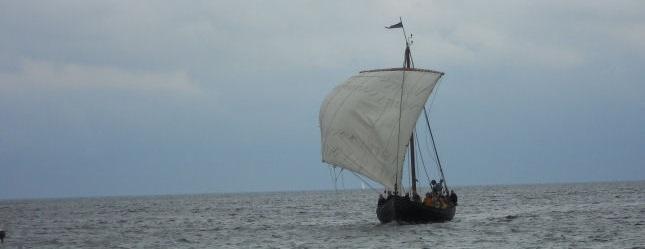How did the Vikings travel around in the world?

The Vikings were capable sailors and this enabled them to travel widely. Their ships were highly advanced and, in particular, the progress made in the use of the sails was of great significance. The Viking ships reached as far away as Greenland and the American continent to the west, and the Caliphate in Baghdad and Constantinople in the east. In the second half of the 9th century it became increasingly common for the Vikings to settle in the countries that they had previously ravaged. The Danes lived especially in England and Normandy. Scotland, Ireland and the islands of the North Atlantic were favoured by the Norwegians. The Swedes, on the other hand, settled in north-western Russia. These newcomers made a living as farmers, craftsmen and traders.
The Viking ships
The ships of the Vikings were the key to their success. Although the construction methods remained the same, several types of ship were produced and developed in the Viking period.
The longship is the most well known of these. We know from the Icelandic and Norse sagas that these warships often had names and were regarded as the ultimate weapon and status symbol. The Oseberg Ship shows that the vessels could also be elaborately carved - such decoration emphasising the ship’s symbolic value. The longships of the later Viking Age were highly specialised vessels, which were constructed in order to reach high speeds and transport troops. Their long, narrow shape made them quick in water, but also meant a very limited capacity for cargo. Typically there was only room on board for a week’s supplies, which placed logistical demands upon the Viking expeditions.
However, there were also other types of ships, which were equally important to the Vikings. The trading vessel was one of these. Just like the warship, this type of ship was produced in different sizes. These ranged from small vessels, that could transport goods around Danish waters, to large ocean-going ships with a cargo capacity of up to 60 tons.
Knowledge regarding navigation and the ability to find the way has been lost during the c. 1000 years since the end of the Viking Age. We know from the Norwegian medieval written source Hauksbók that bearings were taken using geographical features and that sailors were also guided by the sun and stars. Overcast weather on open sea must certainly have given the Vikings problems, but, on the other hand, they had a much greater knowledge about nature than we have today. For example, wild animals could tell them about their position and distance from land. These included bird species, which always stay within a certain distance of their nests, and migrating whales.
